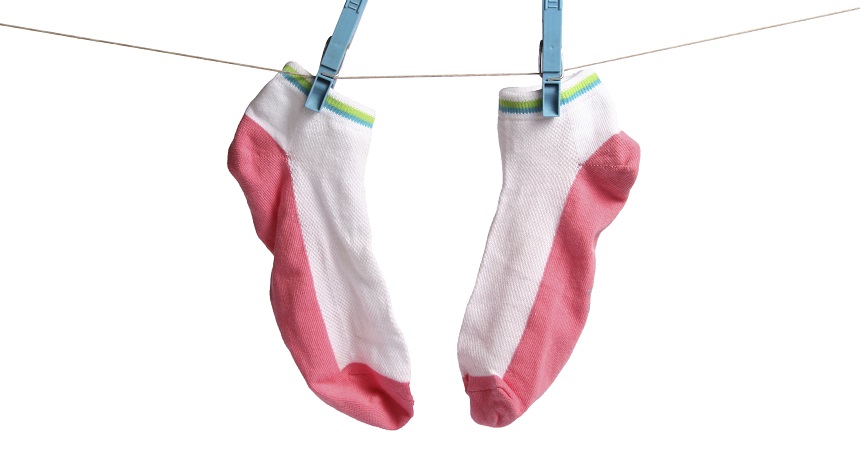News Brief: Wash removes nano germ-killers
Heavy-duty cleaning can destroy the antibacterial properties of nanosilvered fabrics

Athletic wear, such as socks, are among the clothes frequently treated with nanosilver to kill bacteria (and sometimes stink). But laundering can wash away that silver and any germ protection it initially offered.
ronstik/iStockphoto
By Beth Mole
DENVER, Colo. — Manufacturers often coat fabrics with nano-sized particles of silver. It’s not to add bling. That precious metal can kill the bacteria that make sweaty gym socks stinky. In hospitals, that silver can make fabrics toxic to disease-causing germs. And that’s why traces of nanosilver now coat everything from athletic wear to hospital gowns. But giving these fabrics a deep clean may also clean out their silver.
Nano tends to refer to any tiny bits with dimensions on the scale of billionths of a meter. Research has shown silver kills bacteria. But silver also is expensive. So manufacturers use as little as possible. That’s made nanosilver attractive.
But how well does that silver hold up. Do the nanosilver bits wash out in the laundry? Or do those nanobeads release toxic silver ions into the wash water, where they might ultimately poison beneficial microbes in the environment?
Empa is the Swiss Federal Laboratories for Materials Science and Technology in St. Gallen. And chemists there wanted answers. So they began washing silver-treated clothes. Afterwards they inspected the metallic nanobits.
Tough detergents contain bleach or bleach alternatives. And these sometimes made the nanosilver crack and crumble in the wash. The detergents probably widen tiny cracks on the particles’ surfaces, notes Empa’s Denise Mitrano. She led the new study.
By degrading the silver bits, she says laundering can allow little chunks of it to break off. Milder detergents didn’t do that. Yet some silver washed out during laundering with even the mild detergents. And that might allow toxic silver-based ions to enter the wastewater. This could be bad news for downstream wildlife and beneficial microbes.
Mitrano reported her team’s new findings here on March 25 at the national meeting of the American Chemical Society.
Power Words
(for more about Power Words, click here)
chemistry The field of science that deals with the composition, structure and properties of substances and how they interact with one another. Chemists (scientists in this field) use this knowledge to study unfamiliar substances, to reproduce large quantities of useful substances or to design and create new and useful substances. (about compounds) The term is used to refer to the recipe of a compound, the way it’s produced or some of its properties.
detergent A compound derived from petroleum products, often used for cleaning. Detergents work by breaking up and surrounding dirt particles or oily substances, so that they can be washed away with water.
germ Any one-celled microorganism, such as a bacterium, fungal species or virus particle. Some germs cause disease. Others can promote the health of higher-order organisms, including birds and mammals. The health effects of most germs, however, remain unknown.
microbe Short formicroorganism. A living thing that is too small to see with the unaided eye, including bacteria, some fungi and many other organisms such as amoebas. Most consist of a single cell.
nanoparticle A small particle with dimensions measured in billionths of a meter.
ion An atom or molecule with an electric charge due to the loss or gain of one or more electrons.
toxic Poisonous or able to harm or kill cells, tissues or whole organisms. The measure of risk posed by such a poison is its toxicity.
wastewater Any water that has been used for some purpose (such as cleaning) and no longer is clean or safe enough for use without some type of treatment. Examples include the water that goes down the kitchen sink or bathtub or water that has been used in manufacturing some product, such as a dyed fabric.







